Women artists you should know: Mary Abbott
The It-Girl Abstract Expressionist history forgot about
This week’s post is a deeper dive into my note series, “Women Artists You Should Know.” We’ll take a closer look at one fab female artist - and everything you should know about her. Today’s feature? The Abstract Expressionist Mary Abbott - who has a major retrospective in NYC through June 28th, 2025.
A few months ago, I started a little note series called “Women Artists You Should Know,” which is, of course, exactly what it sounds like: a quick scrollable look into iconic (but lesser-known) women artists. What you don’t see? All the tabs I have open, learning every little juicy detail & never-told stories about them. And it’s time that my little art club gets IN on this deep dive too.
Enter today’s star: Mary Abbott - the debutante-turned-Abstract Expressionist who has a major NYC show right now.

Without further ado…
Meet Mary Abbott—The Woman Artist You Should Know (and everything you should know about her). From what she wore to who she loved–and all of her best work, of course. You’ll be on first-name basis by the end.

Who she was:
Allow me to introduce you to Mary Lee Abbott (1921–2019), the American Abstract Expressionist who left her mark on NYC’s postwar art scene - but has been overlooked for decades.
Born into privilege in the Upper East Side, Mary was your classic blue-blooded uptown girl. But instead of settling for the typical debutante life, she headed downtown - and quickly fell in step with the avant-garde Abstract Expressionists like Pollock, Krasner, Frankenthaler & Willem de Kooning (they were lovers for a time!).
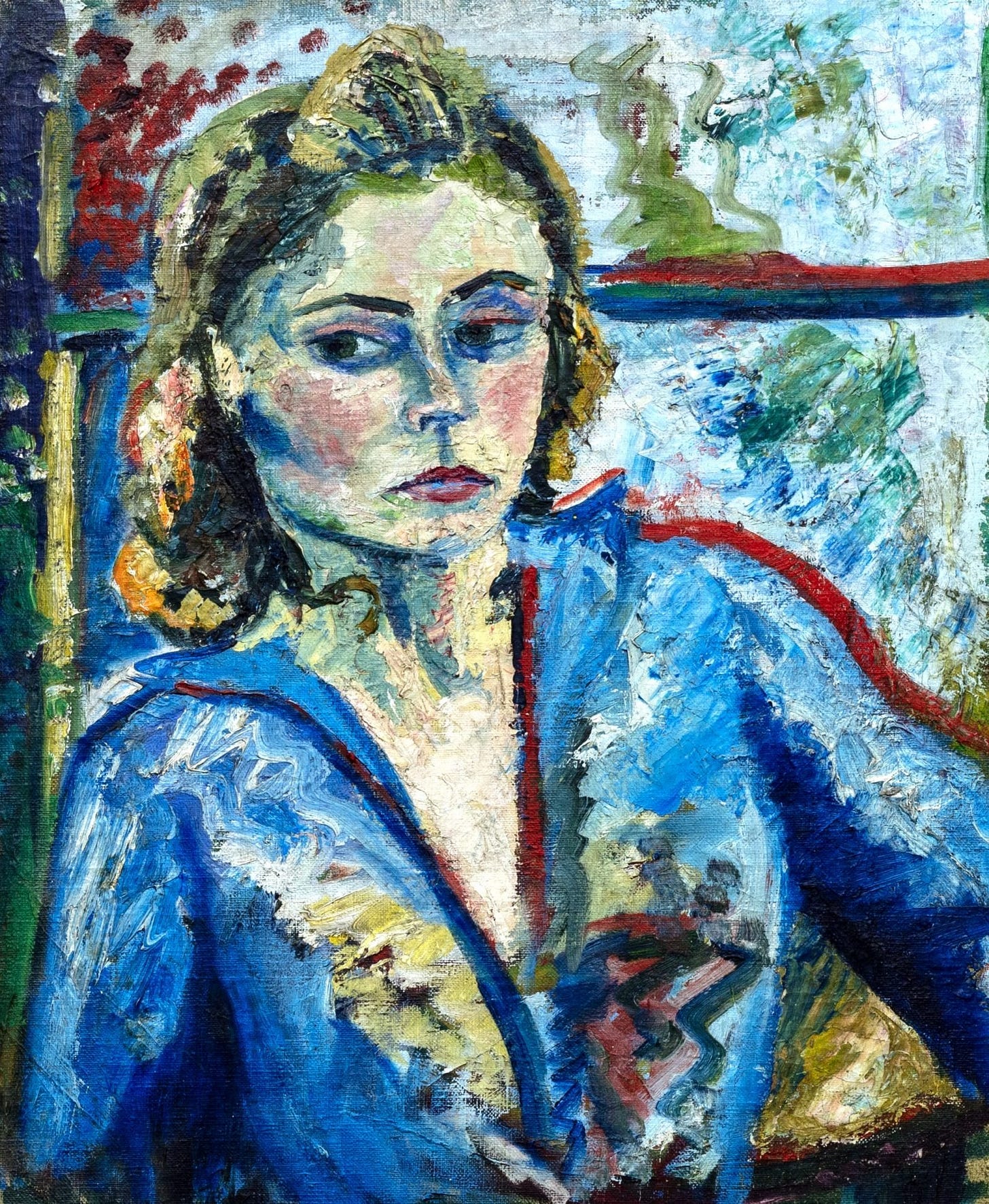
What is abstract expressionism, you may ask? It was *the* movement that put American art on the map. Post-WWII, New York was BUZZING. Europeans were fleeing fascism - and crossing paths with scrappy NYC artists ready to break. the freaking. rules. Canvases became big. Brushstrokes loose! Gestural. Subject matter?? More of a ~feeling~.
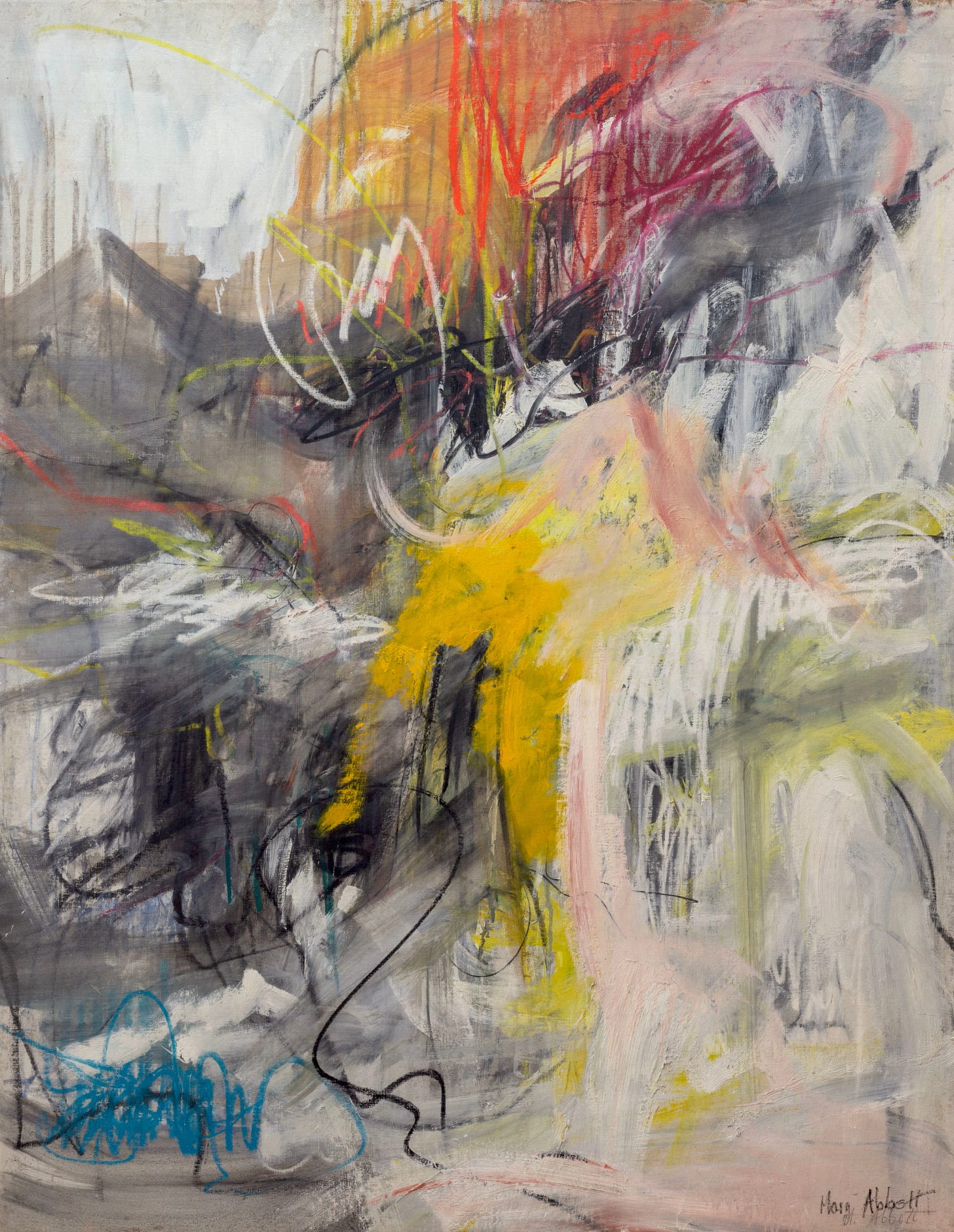
Abstract Expressionism is a scene people tend to associate with the guys: Jackson Pollock, Willem de Kooning, Mark Rothko. The men became international celebs - but here’s the thing: the women were there too. Painting just as boldly! Thinking just as radically! We gotta give the girls - like Mary - their moment. It is about time.
Where she came from:
Let’s get things straight. Mary Abbott was rich. Born July 27, 1921, she was a true Upper East Side high-society girl. She had a pedigree - literally a descendant of Presidents John Adams and John Quincy Adams. Her dad was a decorated naval officer - her mom, a poet and Hearst columnist.
She attended the ~very elite~ Chapin School and summered in Southampton. In 1941, Mary made her grand debut at the Colony Club (crowned the “most glamorous debutante”) then got snapped by Vogue, Harper’s Bazaar, Glamour, and Mademoiselle.
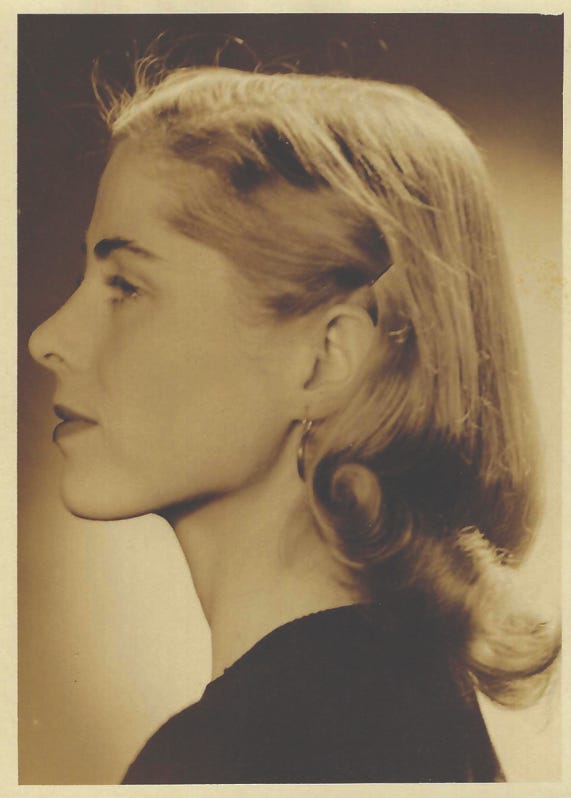
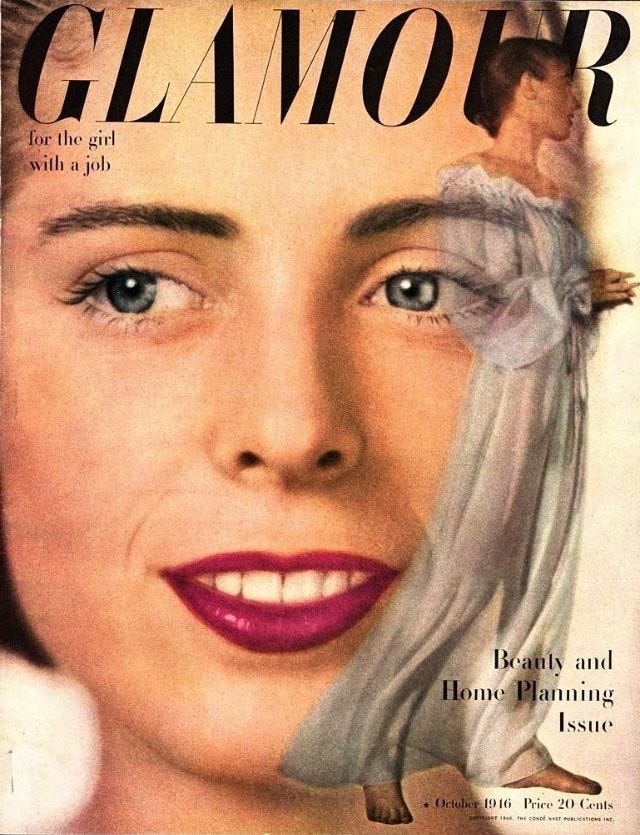
Mary had every advantage money could buy - but here’s why we love her! She never settled. She funded herself through two divorces via modeling gigs, moved downtown to a gritty East Village loft, and earned respect in NYC’s Abstract Expressionist scene. Mary Abbott had privilege, but she also had serious grit and talent. Go girl.
How she got into art:
Just like Frida & Warhol - Mary’s entry into art started with some good old-fashioned trauma. Bedridden with complications from pneumonia at age 9, she later said - “I wasn’t with beauty and nature anymore—I was seeing it from the outside. So for the rest of my life, I’d paint to get with it again.”
She started her art education early- age 12 at the Art Students League (pro-tip, it is still around). Three schools later, at 27 & freshly divorced post-WWII, Mary modeled to pay for her East Village apartment - then got introduced to the key figures of the Abstract Expressionist scene.
She enrolled in a class Subjects of the Artist school - a short-lived but legendary experimental program founded by Rothko, Newman, and Motherwell. Suddenly, she was at the red-hot center of it all.

Where she hung out:
The Colony Club (est. 1903 - today)
Mary is in her teenage years and she’s slipping into a bespoke pair of satin gloves, getting ready for her official debut. Tucked into a tree-lined street on Manhattan’s Upper East Side, the Colony Club is where Mary “came out” to society (it is still one of NYC’s most infamous private clubs today).
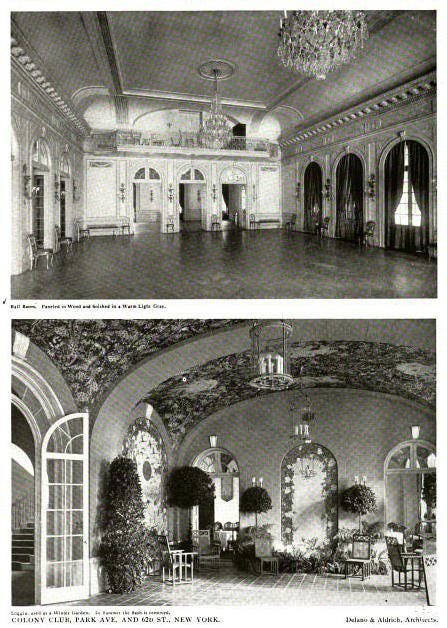
“The Club” (1949 - ca. 1970)
What was the hottest, most exclusive, members-only club in NYC for Abstract Expressionists? A little rented loft on 8th Street aptly known as The Club. Founded in 1949 by sculptor Philip Pavia, Mary got an official invite by 1950. The who’s who of the art world was there: Noguchi (yes you know him for his paper lamps), Rothko, de Kooning.
It was a salon of sorts. They exchanged ideas, drank, danced, dined, covered the walls in collage, hosted lectures & live debates (the entry ticket = bottle of liquor).
Apparently, there were two founding rules: no homosexuals or women. But clearly that didn’t hold up. The COOLEST girls in town - Mary, Lee Krasner, Helen Frankenthaler, Joan Mitchell and Elaine de Kooning - all had a seat at the table.

Cedar Tavern (1945–April 1963, reopened 1964–2006)
The Cedar Tavern is an IYKYK in the art world - nestled in a nondescript building in Greenwich Village, it was the unofficial HQ for the postwar avant-garde crowd. It’s reputation = legendary. Part dive, part philosopher’s den - Roger Rauschenberg looked back "One beer would last me six different artists’ fantasies. Rothko, Barney Newman, Franz Kline, Bill de Kooning, Reinhardt and Pollock occasionally.”
Mary was a regular, drinking and sparring with the guys. She remembered Jackson Pollock’s crazy antics: “his way of making friends was to knock you down and get on top of you.” Pollock was eventually banned after tearing a bathroom door of its hinges and hurling it at Franz Kline (oh!!!!).
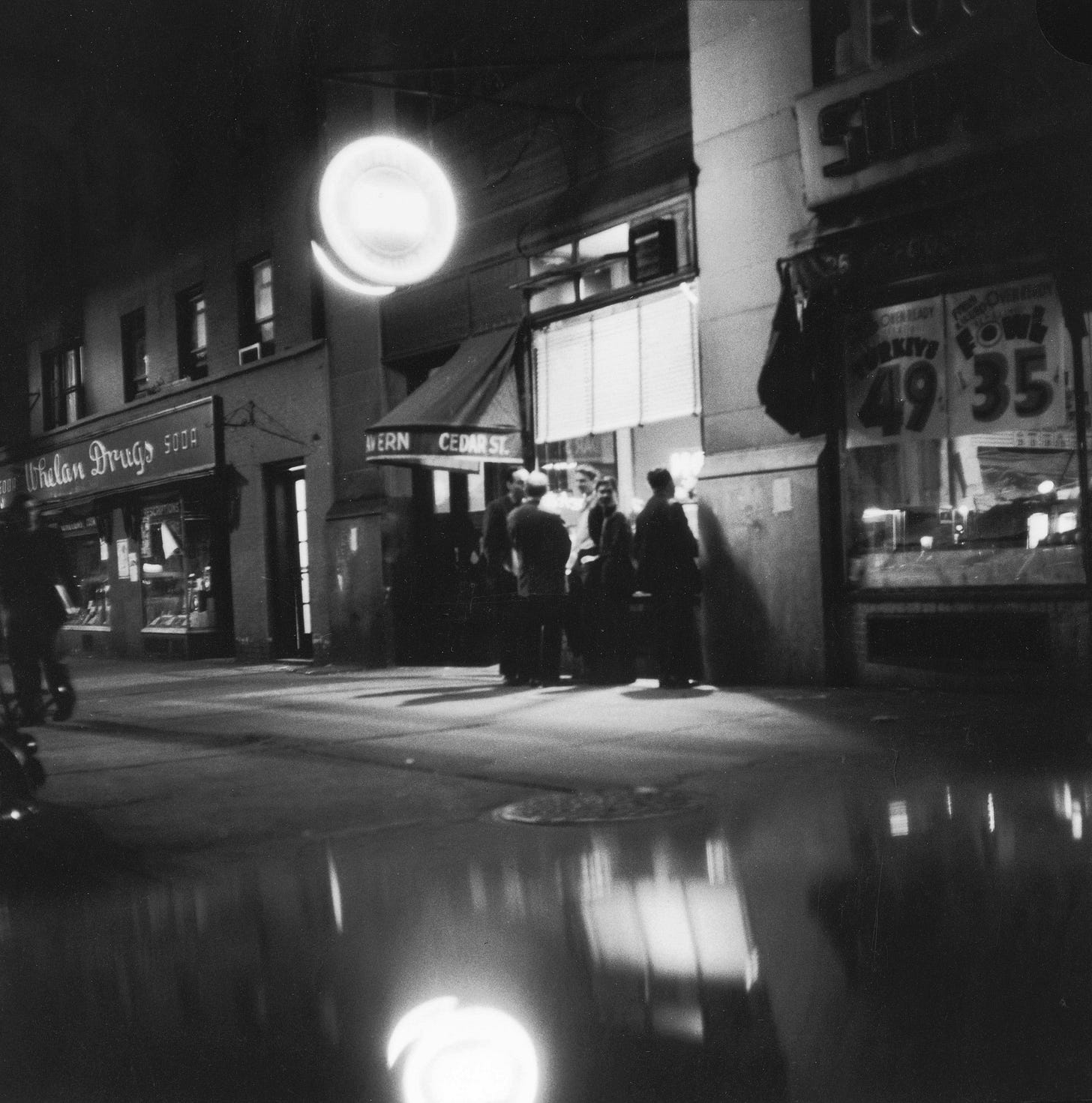
Who she loved:
Petite, blonde, and impossibly stylish, Mary Abbott was a catch. She had two husbands, many lovers, and no kids (can we get a round of applause for the bohemian girls?). One of her early flames was sculptor David Hare - fresh off a breakup with surrealist icon Lee Miller - when she met him in the East Village. But the great, unspoken love of her life? Willem de Kooning.
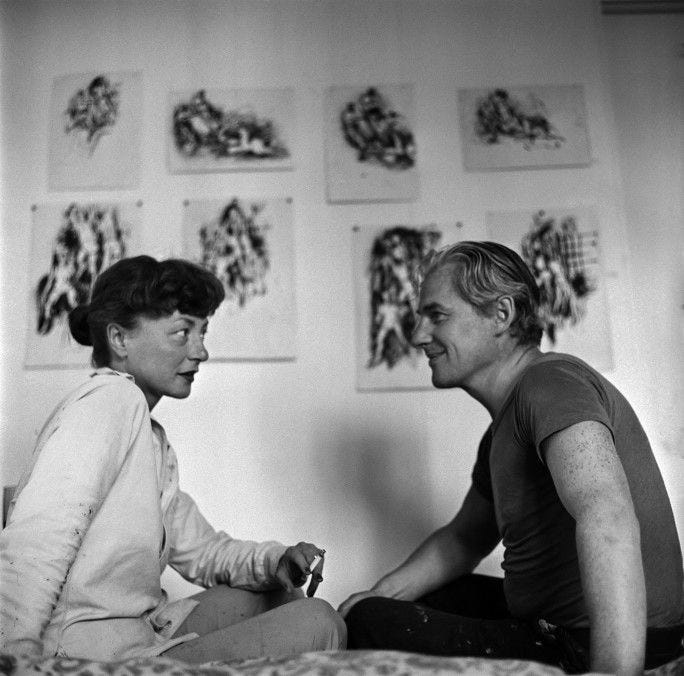
Though it was never official, Mary later referred to Willem as “the love of [her] life.” You can see his influence in her brushstrokes.
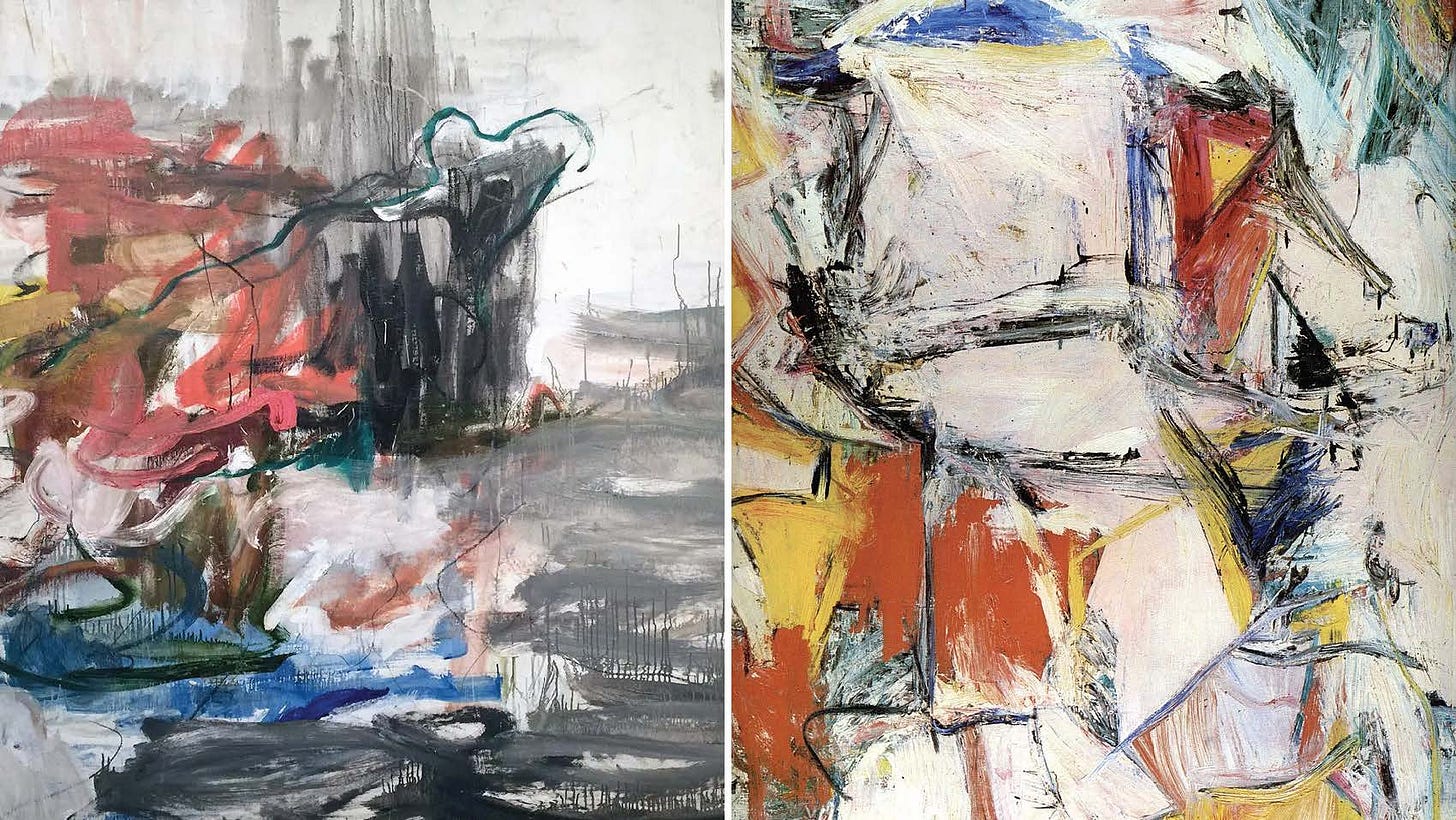
Abbott’s second husband, Tom Clyde, took her around the world to Haiti and the Virgin Islands. Their marriage didn’t last (divorced in 1966), but the warm-weather trips left their mark - it is clear in Mary’s work.
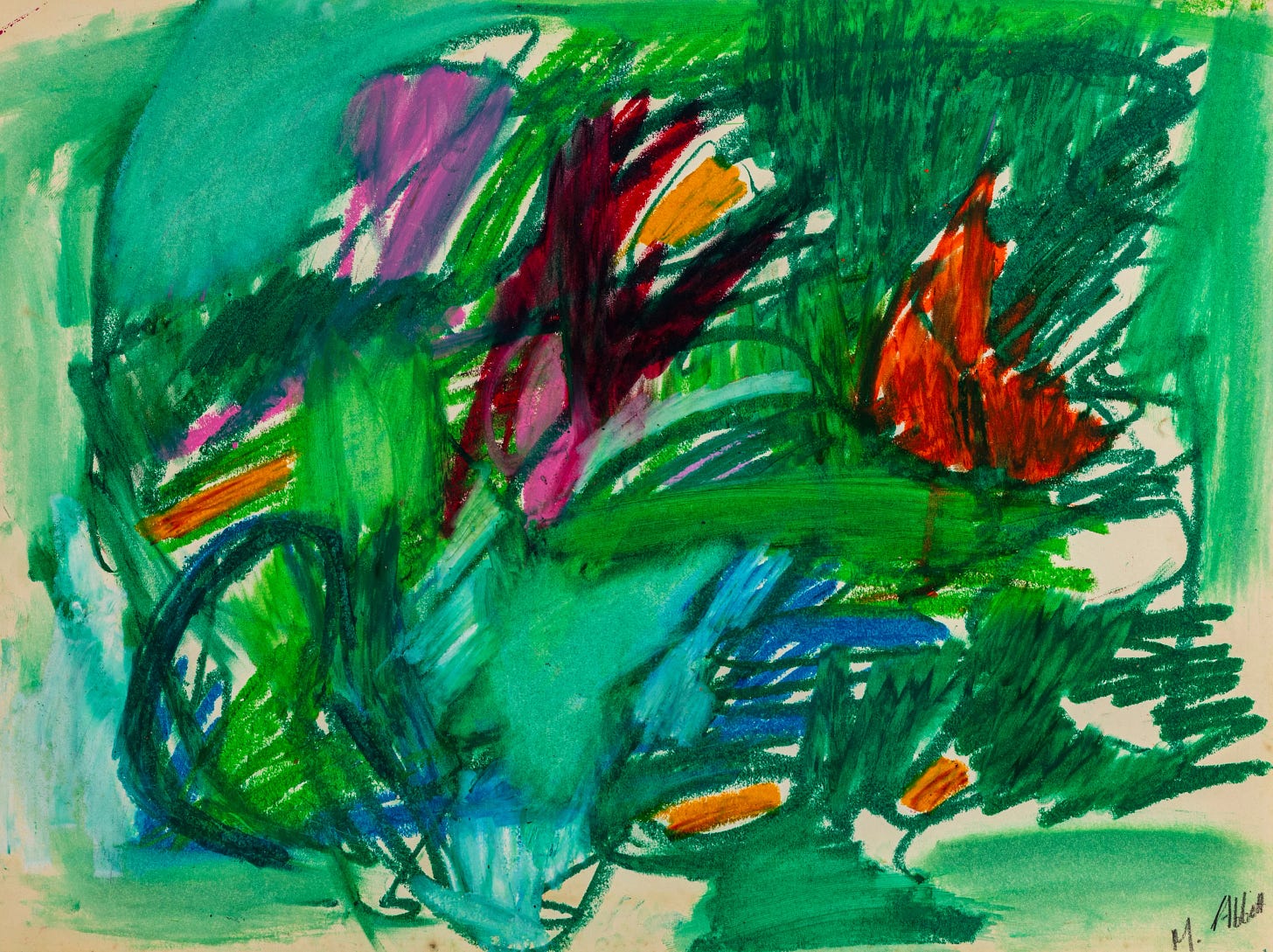
What she wore:
Oooh, how I love thinking about what the downtown art girls wore. Mary Abbott was always polished - painterly - ok - but irreversibly chic. There’s no #shopmylinks on record but here’s where she probably shopped based on era and orbit:

Fifth Avenue:
When Mary “came out” to society in 1939, she probably floated into the Junior Assembly Ball in a white floor-length gown from a Fifth Ave icon - Bergdorf Goodman, Saks, Hattie Carnegie, or Bonwit Teller & Company. Bergdorf’s had just opened its women’s salon & debutantes like Mary stopped by for opera gloves and everyday wear.
Mary didn’t just shop local. A 1940s Vogue profile called her a “promising young painter” dressed in “silk jersey and fishnet” – a Germaine Monteil dress from Bonwit Teller & Company” paired with pieces from Ransohoff’s & Bullocks-Wilshire - two once-iconic West Coast department stores now forgotten in time.
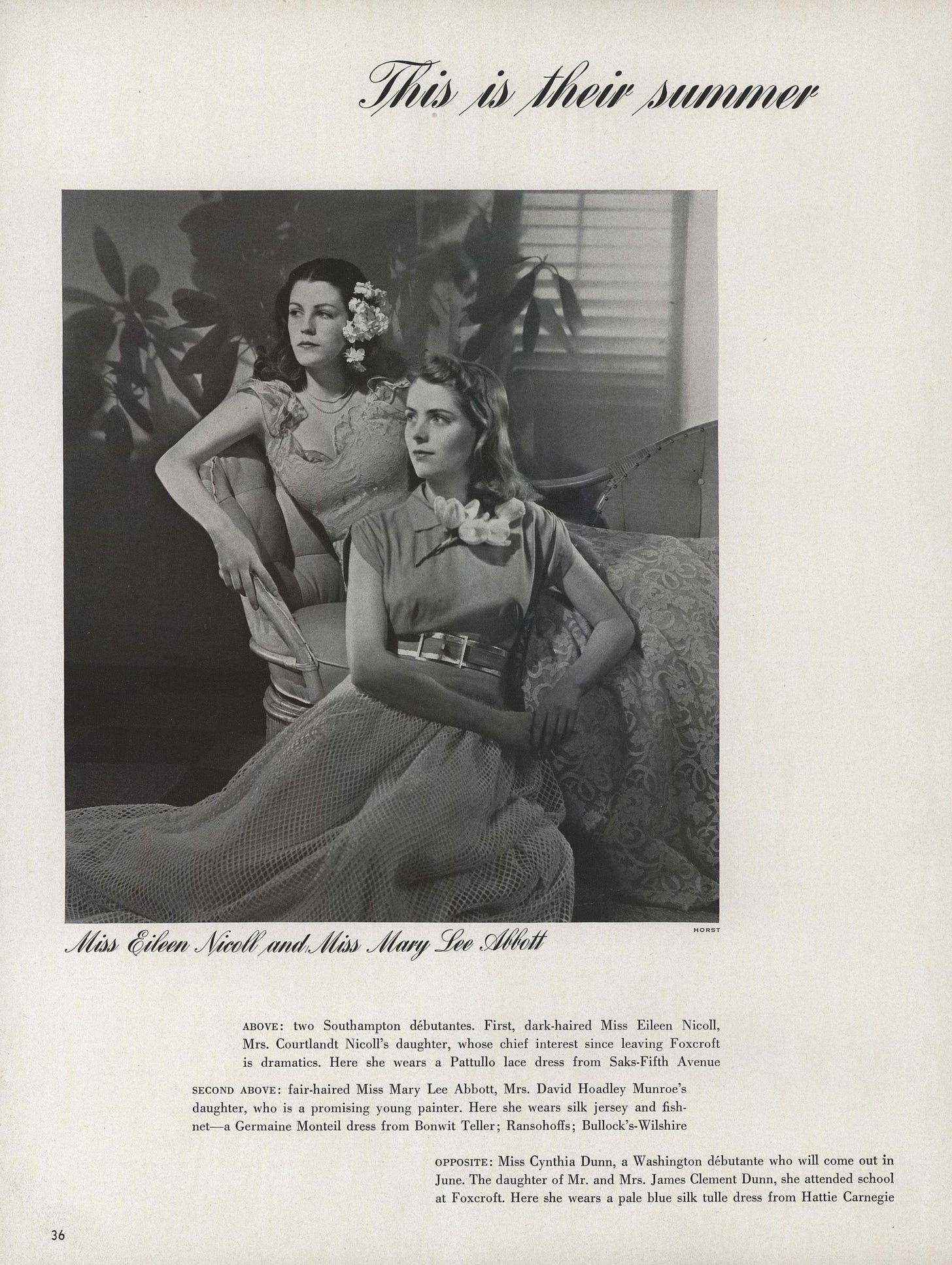
8th Street Boutiques:
By the late ’40s, Mary had traded Fifth Avenue for a little painter’s loft in the East Village. Downtown, she would’ve ducked into the surplus stores and vendor stands along 8th Street and St. Marks - grabbing oversized men’s shirts, broken-in chinos, maybe a canvas bag or two. Functional - but still cool.

Copy her look:
Alex Mill Marsielle Tee
Vintage Navajo metal belt here or a Southwestern silver one here
Vintage hoop earrings from Front General
The Island Wardrobe:
When Mary wasn’t in the city, she was in the Sun. Haiti, the Virgin Islands, or East Hampton. Think: gauzy linen, lightweight blouses, or 100% hand-dyed cotton. Natural fibers & unstructured silhouettes - if it were today, she’d def be wearing Doen.

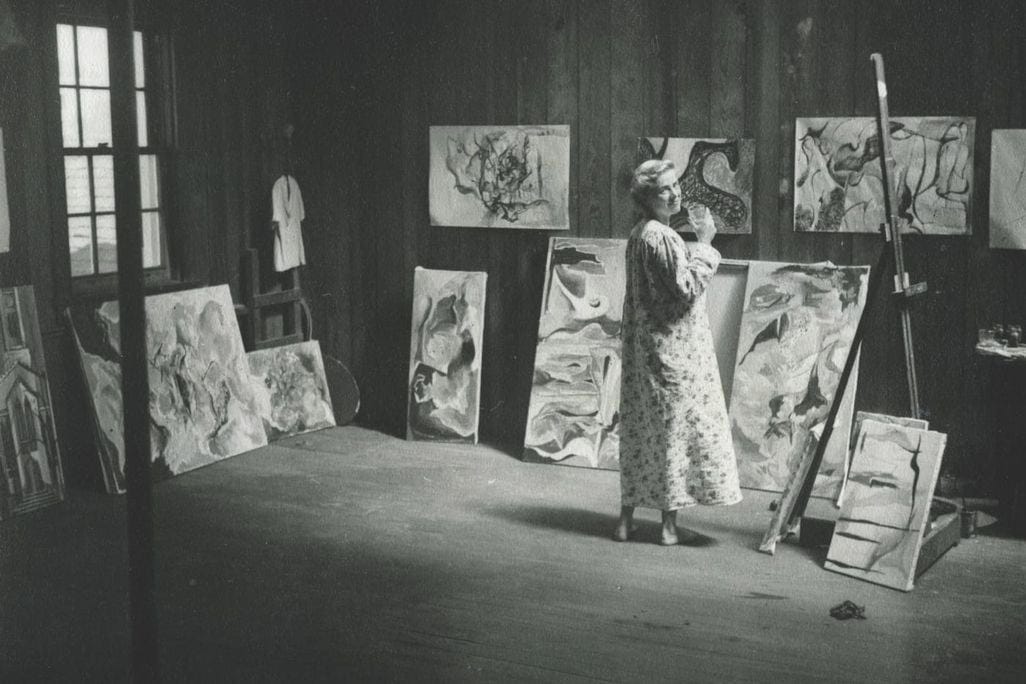
Some more work I love<3
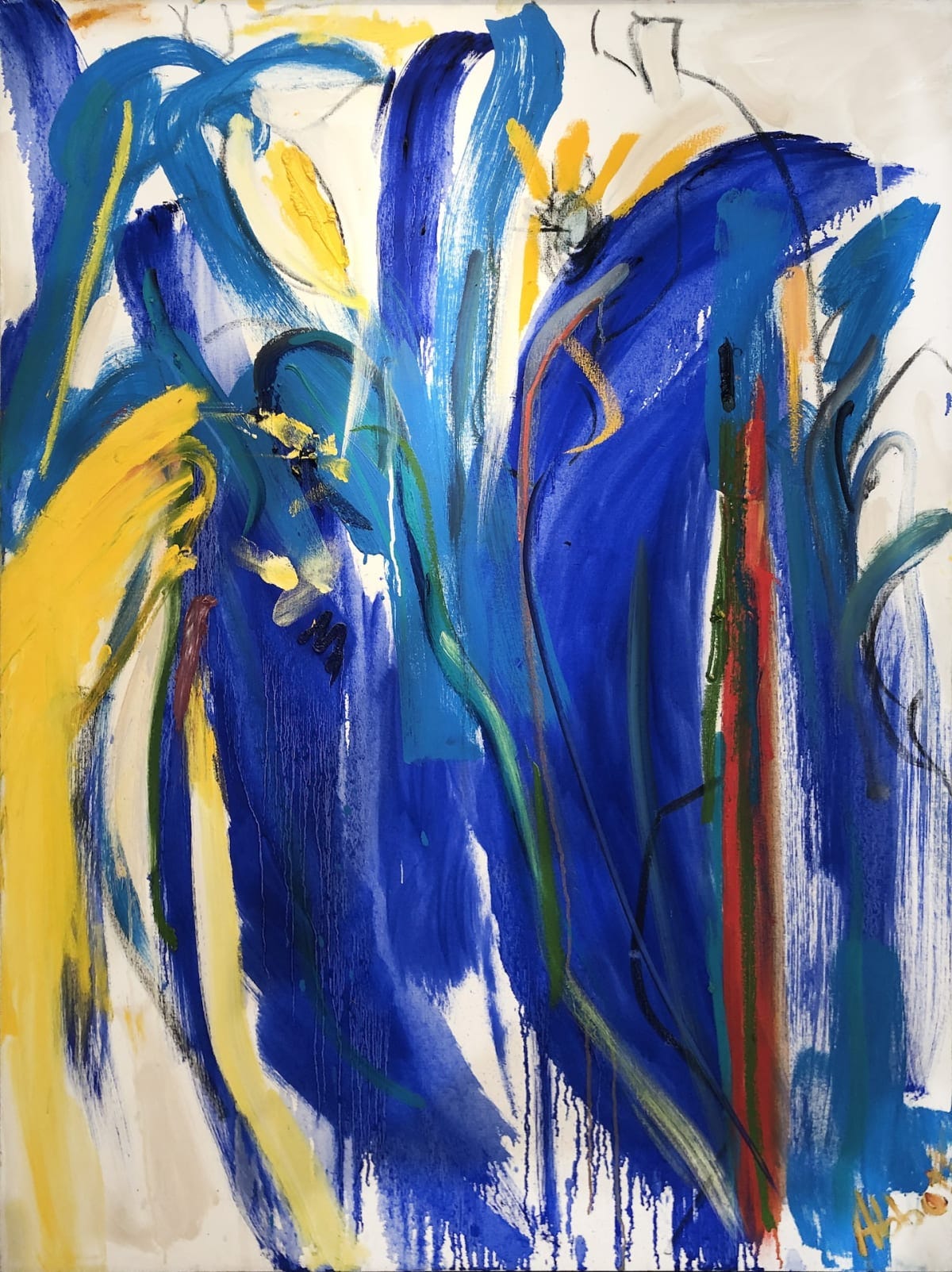
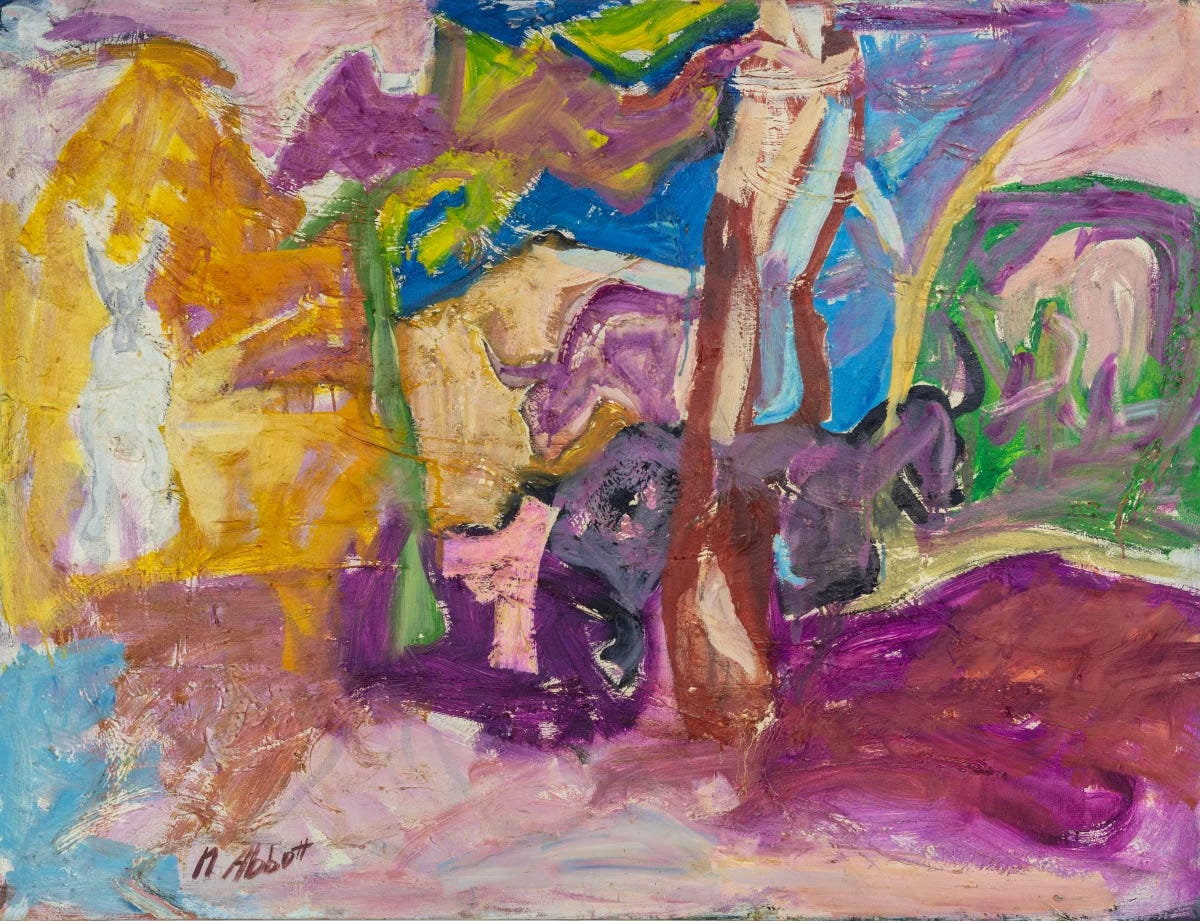
Why she matters:
Mary is THE forgotten woman in the room. She was one of the few trailblazing women in the inner circle of Abstract Expressionism–the Club–but hardly gets talked about.
She’s not just overshadowed by the men (Pollock, de Kooning, Rothko), she’s been secondary to the other women (Krasner, Elaine De Kooning, Helen Frankenthaler). To put it in context, Krasner’s paintings sold for $11.7 million. Mary’s top range - 5k-525k, averaging 14k.

Abstract Expressionism was the first truly American art movement that put NYC on the map. We must know the women at the center of it all.
P.S. there is ONE week left of her show at Schoelkopf Gallery downtown (through June 28th). Go to pay our girl some RESPECT!
More of Mary…
To buy: Her work is still well under market value - if you’re serious about collecting, allow me to point you here
To read: 9th Street Women - right now - I’ll take you out for tea and we can talk for hours about it
To listen: get to know Mary’s peers - Katy Hessel’s podcast on Lee Krasner is fantastic
For more interesting, strange, unusual stories from the art world:
3 modern artists' jewelry you didn’t know existed
Alexander Calder made jewelry for Georgia O’Keefe. Picasso’s goldsmith? His dentist! Dalí built a brooch that beats like a heart.
The secret history of color: yellow
Butter yellow was the color of the season - but when did the collective obsession with yellow begin? Today’s post is diving into the secret history of yellow - from coloring the happiest time of Van Gogh’s life to becoming a noun in Ellsworth Kelly’s work.
3 miniatures the art world forgot about
Alexander Calder designed a tiny circus. Marcel Duchamp’s legacy? Fits in a suitcase. And in postwar Paris, high fashion staged a comeback via haute couture dresses - each no taller than a mini baguette.
A note on sources:
One of my MAIN sources for this piece was The 9th Street Women by Mary Gabriel - I cannot tell you how life-changing it is in terms of understanding and loving art. The author wrote it over twenty years and had a chance to interview Mary Abbott, among many of the other main artists featured, themselves. I’ve read it twice.





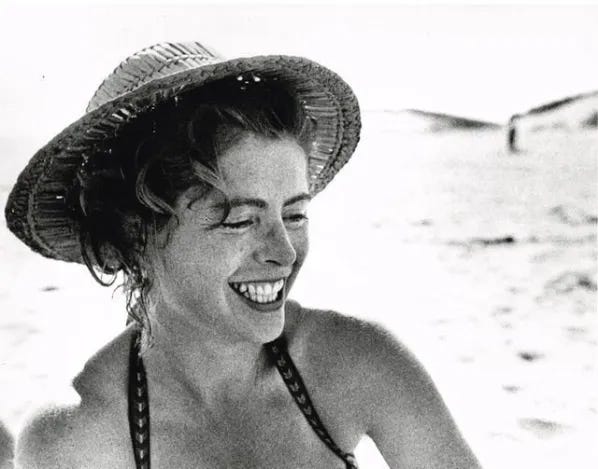
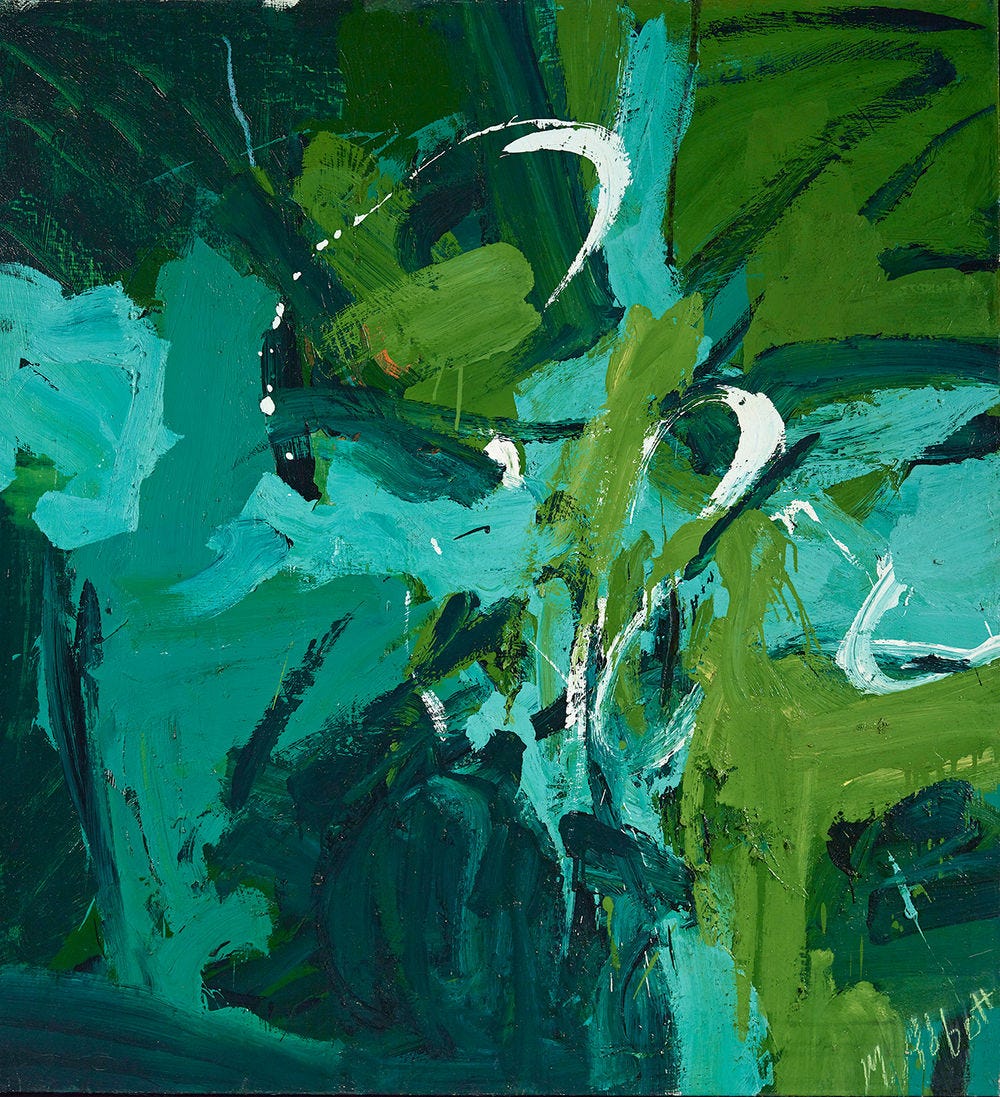
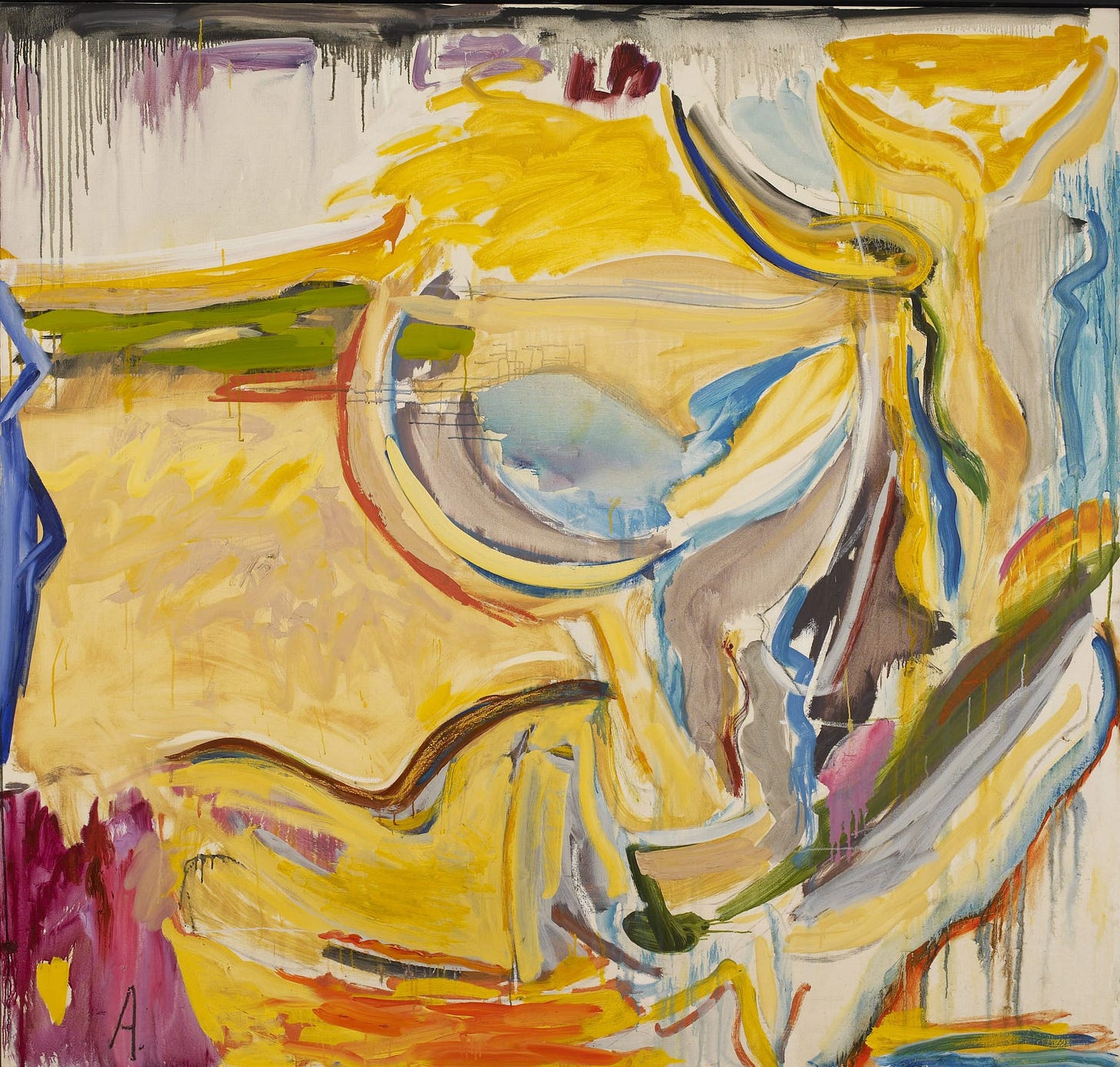
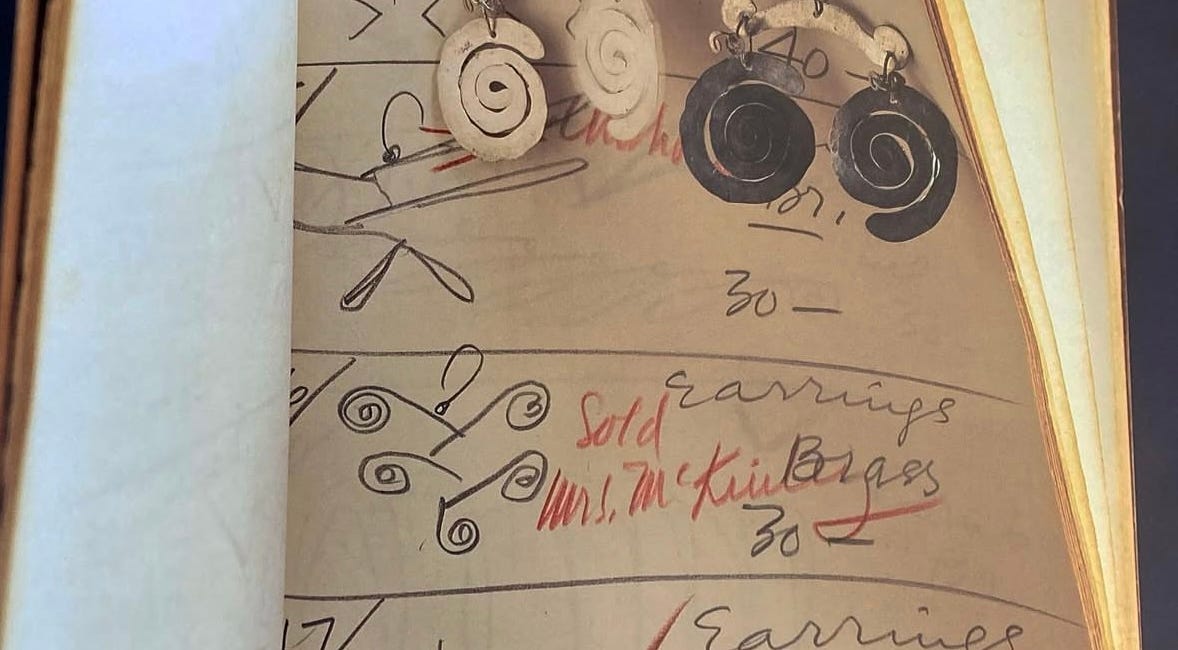
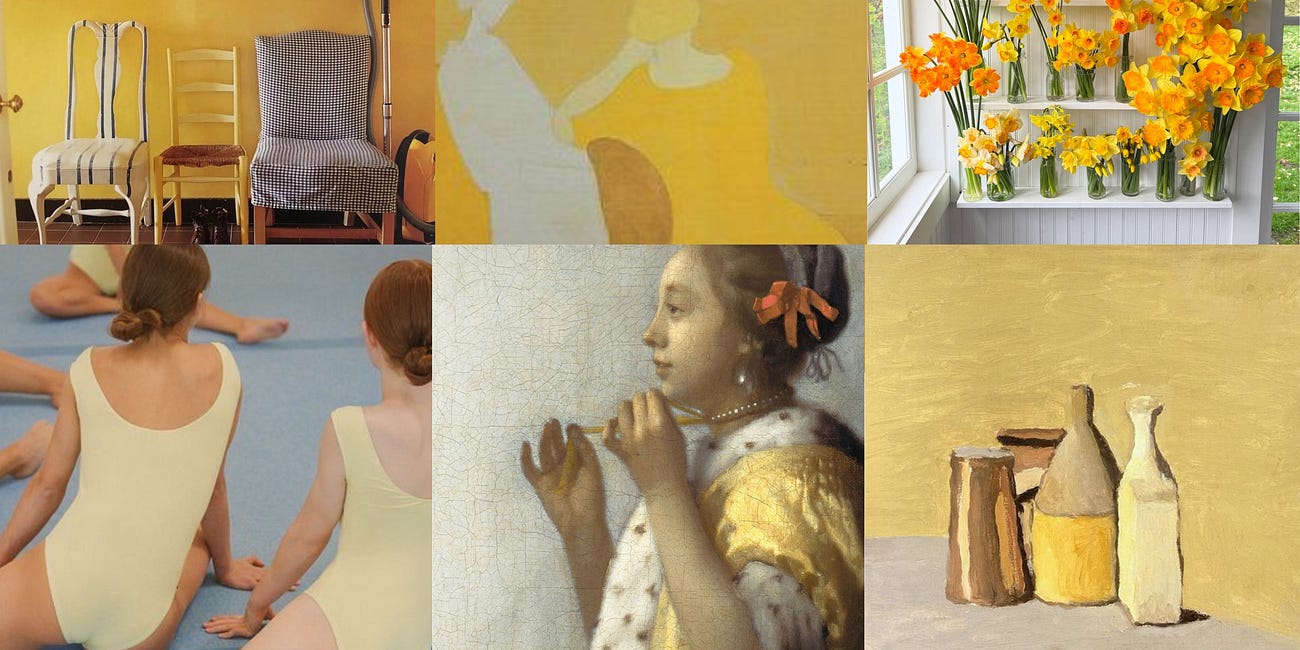

I often reminisce about how much I miss school and i have to say your substack always scratches that itch
Loved art as a kid and teen and at some point lost my way but your page is bringing that love back! Great read, thanks so much!!